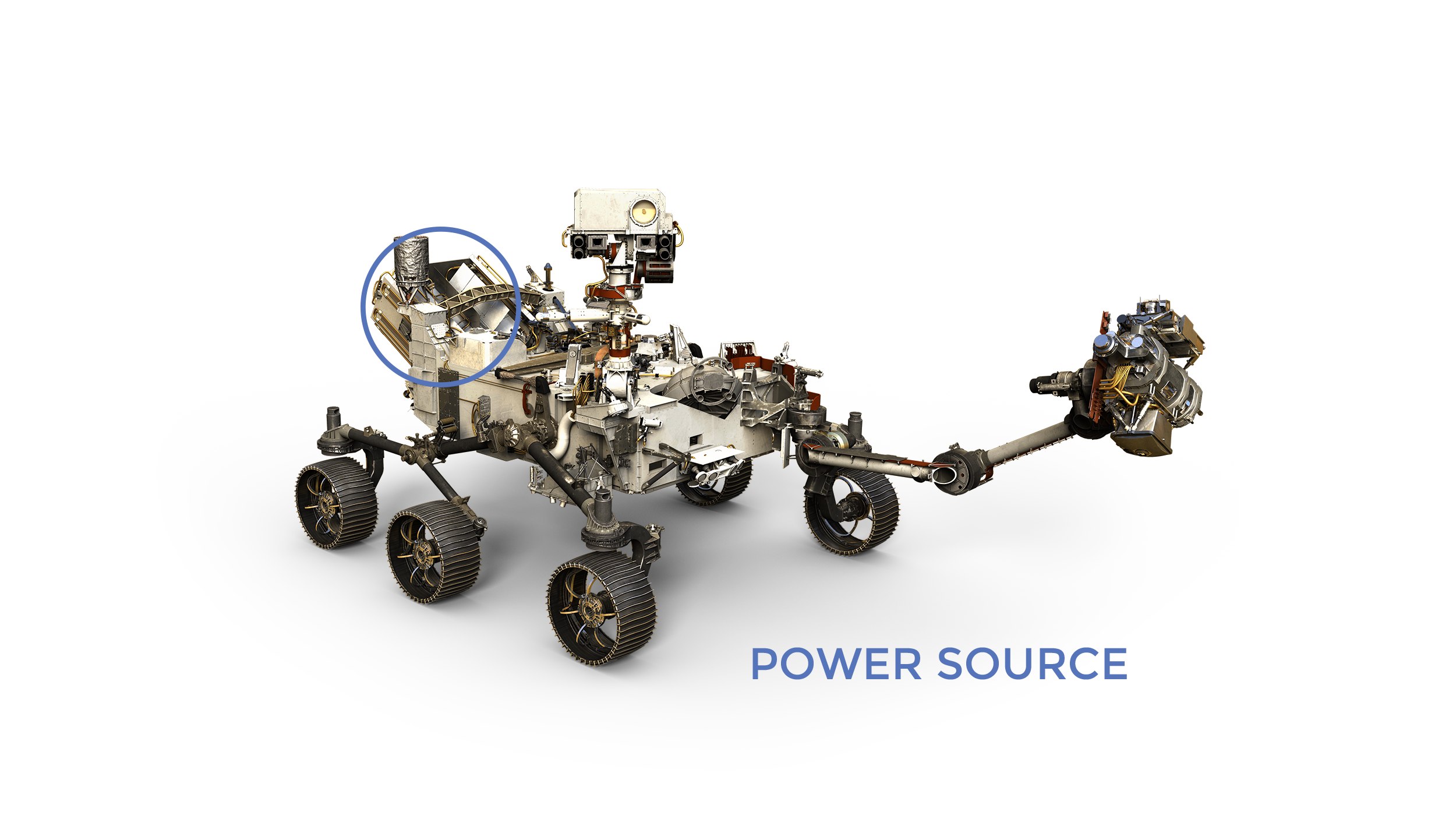Electrical Power
The Perseverance rover requires electrical power to operate.Without power, the rover cannot move, use its science instruments, or communicate with Earth.
Perseverance carries a radioisotope power system. This power system produces a dependable flow of electricity using the heat of plutonium's radioactive decay as its "fuel."
The power source is called a "Multi-Mission Radioisotope Thermoelectric Generator" or MMRTG for short. The MMRTG converts heat from the natural radioactive decay of plutonium into electricity. This power system charges the rover's two primary batteries. The heat from the MMRTG is also used to keep the rover's tools and systems at their correct operating temperatures.
Tech Specs
- Main Job Provide electricity to the rover
- Location Aft end of the rover
- Size 25 inches (64 centimeters) in diameter by 26 inches (66 centimeters) long
- Weight About 99 pounds (45 kilograms)
- Power System Uses 10.6 pounds (4.8 kilograms) of plutonium dioxide as the source of the steady supply of heat
- Electrical Power Produced About 110 watts at launch, declining a few percent per year
- Batteries Two lithium-ion rechargeable batteries to meet peak demands of rover activities when the demand temporarily exceeds the MMRTG's steady electrical output levels.
- Reliability The electrical power system on the Mars 2020 Perseverance rover is just like the one used on the Mars Science Laboratory Curiosity rover. NASA has used similar power systems reliably for decades, including the Apollo missions to the Moon, the Viking missions to Mars, and on spacecraft that flew to the outer planets and Pluto, including the Pioneer, Voyager, Ulysses, Galileo, Cassini, and New Horizons missions.
- Safety The fuel inside each General Purpose Heat Source module is surrounded by several layers of protective materials, including the type of tough material used in the nose cones of missiles designed to survive fiery conditions during re-entry into Earth’s atmosphere. In addition, the radioisotope fuel is manufactured in a ceramic form (similar to the material in a coffee mug) that resists being broken into fine pieces, reducing the chance that hazardous material could become airborne or ingested. In the unlikely event of a Mars 2020 launch site accident, the estimated maximum dose an exposed individual could receive is 210 millirem. A resident of the United States receives, on average, 310 millirem of radiation each year from natural sources, such as radon and cosmic rays from space.
The MMRTG is provided to NASA by the U.S. Department of Energy
This power system provides several advantages:
- The 14-year operational lifetime of an MMRTG provides significant reserve for Mars 2020 prime mission duration of 1.5 Mars years (three Earth years)
- It gives the rover greater mobility over a large range of latitudes and altitudes
- It allows scientists to maximize the capabilities of the rover's science instruments
- It provides engineers with a lot of flexibility in operating the rover (e.g., day and night, and through the winter season)


